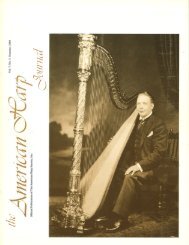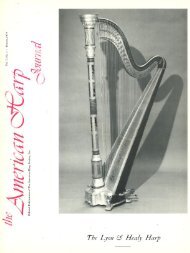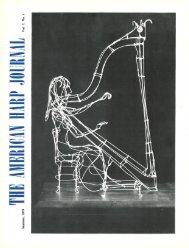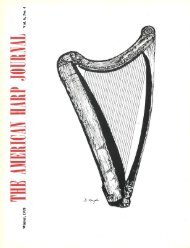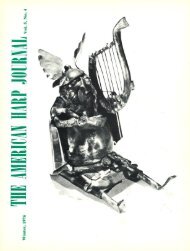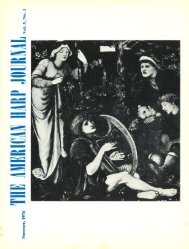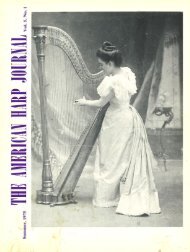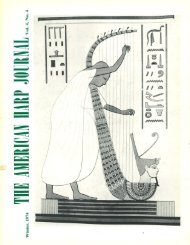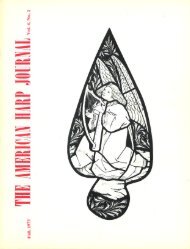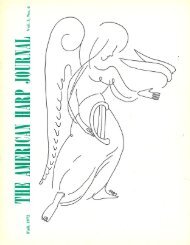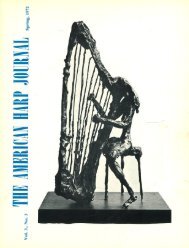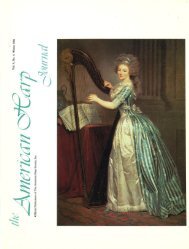Create successful ePaper yourself
Turn your PDF publications into a flip-book with our unique Google optimized e-Paper software.
Overall Design<br />
Erwin Stein has observed:<br />
In his song cycles, choral works and operas, he [Britten] did<br />
not so much aim at integrating the pieces, movements or<br />
acts thematically as at achieving unity of the whole by<br />
skillfully coordinating the parts.'<br />
University of Rochester<br />
EASTMAN SCHOOL OF MUSIC<br />
A Ceremony of Carols is no exception to the rule.<br />
Although the cycle begins and ends with a liturgical<br />
framework, the plainchant, there is no obvious connection<br />
by theme or rhythm between the movements<br />
except the recall of the chant in the harp interlude.<br />
The key connections have been considered in the<br />
individual analyses, but it should be pointed out that<br />
the impression of framework is strengthened by the<br />
fact that the first and second pieces and the penultimate<br />
and final pieces are all on a species of A, either<br />
major or modal. The collection of poems is varied,<br />
but the texts are unified by reference to some aspect<br />
of the Nativity. Only the "Spring Carol" does not<br />
allude to the events of Christmas; the reason for its<br />
inclusion remains hidden.<br />
The placement of the harp "Interlude" about halfway<br />
through the cycle suggests that Britten felt a<br />
certain climax had been reached in "This Little<br />
Babe," as indeed it had, and that the moment of<br />
restful denouement was at hand. <strong>No</strong>ne of the concluding<br />
movements involve the aggressive intensity<br />
of "This Little Babe."<br />
Some directors have tried to solve balance problems<br />
for performance with large groups by the use of<br />
two harps. Since a perfect unison between two<br />
plucked-string instruments is nearly impossible to<br />
achieve, discreet amplification would be a more artistic<br />
alternative, although most harpists deplore, and<br />
rightfully so, any electronic modification of the tone<br />
of the instrument.<br />
"Procession" and "Recession"<br />
The only sections of A Ceremony of Carols based on<br />
pre-existing material are the identical "Procession"<br />
and "Recession" which are derived almost literally<br />
from an Antiphon to the Magnificat for Second Vespers<br />
on Christmas Day. 2 Britten apparently put aside<br />
considerations of English nationalism in choosing a<br />
chant from the Gregorian rather than from the Sarum<br />
rite.<br />
The original plainchant is cast in Mode I; it begins<br />
on step three of the mode and rises to consistently<br />
flatted Bs, thus creating the illusion of a modern<br />
major scale. Britten has chosen to dwell upon the<br />
major sonority of the chant; the tonal center, however,<br />
is placed on A. The chant is quoted almost<br />
verbatim, except for insignificant deviations connected<br />
primarily with text-setting.<br />
<strong>Winter</strong>/<strong>1980</strong><br />
Eileen Malone<br />
professor of harp<br />
Eastman School Degree Programs:<br />
BACHELOR OF MUSIC<br />
• applied music, vocal and instrumental • music<br />
education • theory • composition • music history<br />
MASTER OF ARTS<br />
• music education • musicology • theory<br />
MASTER OF MUSIC<br />
• performance • music education • composition<br />
• jazz studies and contemporary media<br />
DOCTOR OF PHILOSOPHY<br />
• music education • musicology • theory<br />
• composition<br />
DOCTOR OF MUSICAL ARTS<br />
• performance and literature • music education<br />
• composition • conducting<br />
For more information, or for a copy of the Eastman<br />
Bulletin, wri•e: Charles Krusenstjerna, Director of<br />
Admissions, Eastman School of Music, 26 Gibbs St.,<br />
Rochester, N.Y. 14604. The University of Rochester<br />
offers equal opportunity to all applicants.<br />
25




